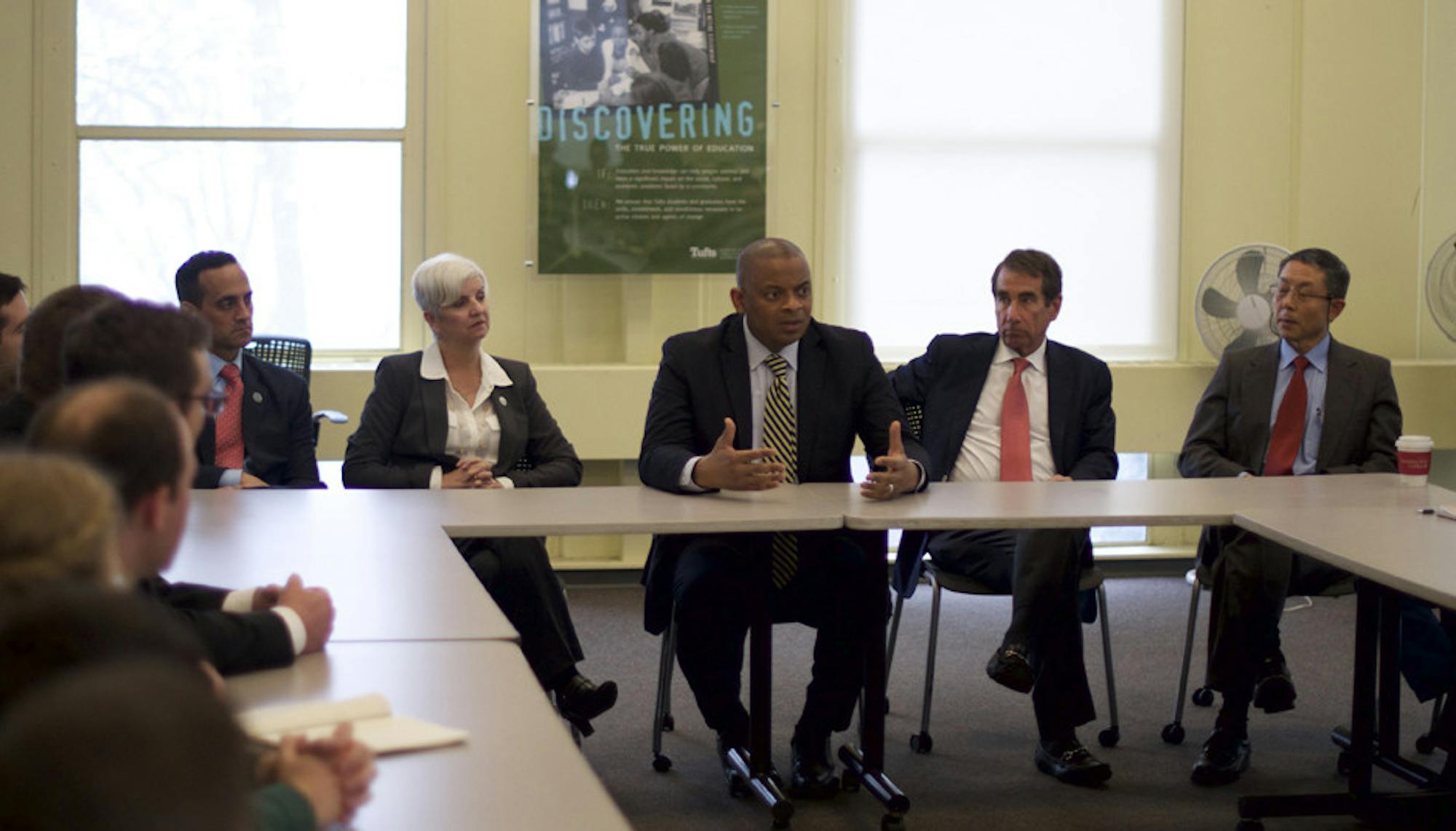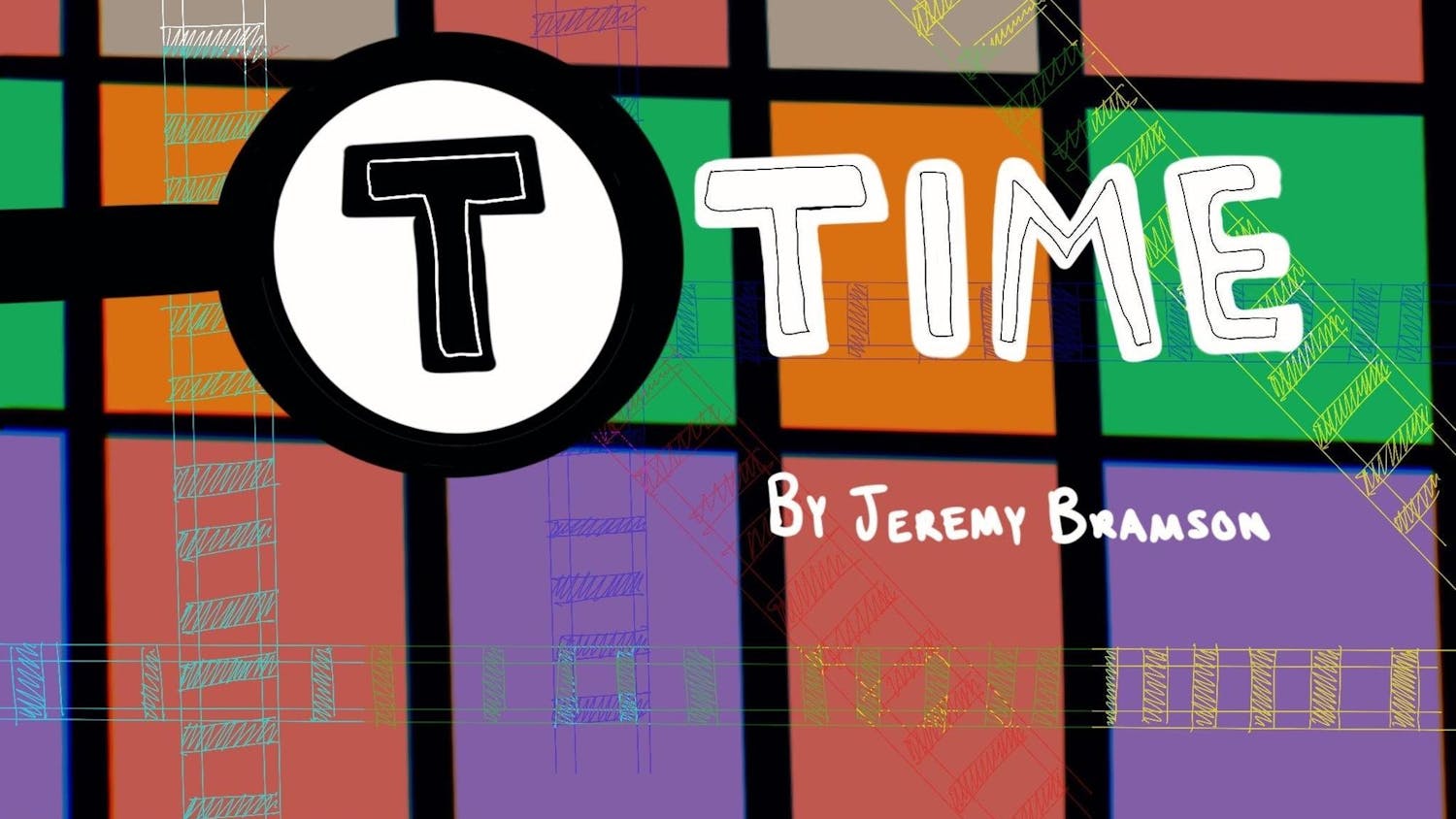U.S. Secretary of Transportation Anthony Foxx spoke yesterday morning at a roundtable discussion in the Rabb Room, where he answered students' questions about transportation planning and policy. The event, hosted by Tisch College and the School of Engineering, was Foxx's only visit to a university while in the Boston area, according to Alan Solomont, the Pamela Omidyar dean of the Jonathan M. Tisch College of Citizenship and Public Service.
Following brief introductions by Solomont and Dean of Engineering Jianmin Qu, Foxx spoke about the federal Department of Transportation (DOT)'s current priorities.
In particular, Foxx explained that in his role, he is focused on integrating transportation systems, treating projects as harbingers of economic opportunity and emphasizing local autonomy in setting funding priorities.
"There was a time when our infrastructure was built along lines to keep people in and out," he said, referring to geographic divisions between populations created by projects. "In this era of transportation development... I really want the project sponsors to be thinking about what they're doing as bridges: bridges to opportunity [and] bridges to access."
After his remarks, Foxx took several questions from Tufts students.
A graduate Urban and Environmental Policy (UEP) student began by asking how the DOT reconciles local involvement in projects with the potential for cost overruns. Foxx responded by explaining that transportation projects in the United States are frequently complicated by red tape surrounding property rights, and that the country's many layers of government create a level of uncertainty. He said that the DOT is currently looking to use high-tech modeling to account for risk, and make cost-effective choices.
UEP graduate student Christopher Scranton asked about how the DOT prioritizes particular transportation investments such as bridges in regards to jobs and opportunity. Foxx said that the government has made mistakes in the past by picking winners and losers for projects to invest in, and said that the best solution is for local officials to be involved. At the same time, Foxx argued that the DOT should better use its enforcement power to ensure that local governments are held accountable.
Nathaniel Fink, another UEP graduate student, proceeded to ask about Toward Zero Deaths, a program supported by the DOT that seeks to improve highway safety. Foxx said that Congress is often reluctant to invest in local infrastructure projects like pedestrian and bicycle safety, but that the DOT can aid local authorities by sharing best practices.
"I don't see a future where there's a significant amount of federal money dedicated to [local infrastructure], but I think in terms of best practice setting, programs ... where we can point to examples of what can be done can be helpful," he said.
UEP graduate student Nathaniel Mayo then asked about whether the DOT is re-evaluating safety standards in response to the development of self-driving cars. Foxx was optimistic about the prospect of autonomous vehicles in improving safety, and said that the DOT is working to rethink its rules and create a new framework accordingly.
Senior Joseph Cowan then asked about the DOT's checks and balances for private investment. Foxx said he was receptive to private-sector investment in infrastructure, but added that the public sector still decides what to prioritize through permitting and funding processes.
"We don't have a lot of instances where the private sector can just go and build something on its own," Foxx said. "There are public input controls and it's really up to governors to navigate those politics and make sure the public interests are served."
An undergraduate majoring in computer science asked about how the DOT will ensure that self-driving cars will be safe. Foxx explained that there are currently many unanswered questions surrounding how engaged passengers should be in self-driving cars, and said that research is ongoing. He noted that the DOT will continue to study the matter over the next few years.
Finally, Miranda Seeley, a senior majoring in civil engineering, asked how students can contribute their ideas to transportation planning. Foxx spoke about the importance of computerized modeling systems and said that the DOT will encourage student input in that regard. He added that he hopes to involve civil engineers in planning decisions.
"For most of our lifetimes, we've asked civil engineers to solve a very narrow problem, and we need to expand the scope of the problem we're asking them to solve," Foxx said. "I would think of yourself not just as a civil engineer, but as a builder of the fabric around America."
Transportation Secretary Anthony Foxx discusses policy, projects with Tufts students

U.S. Secretary of Transportation Anthony Foxx participates in a roundtable discussion with students from Tisch College and the School of Engineering on April 4.





